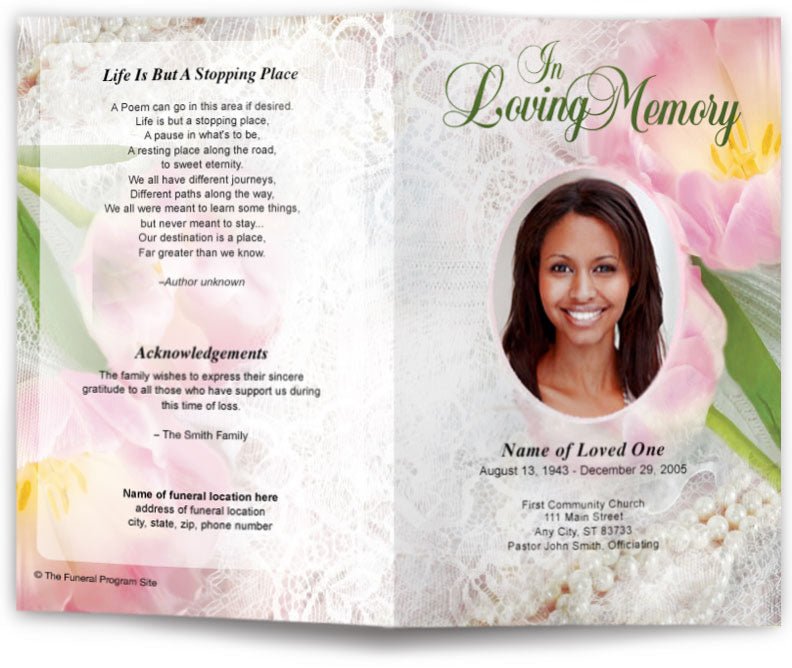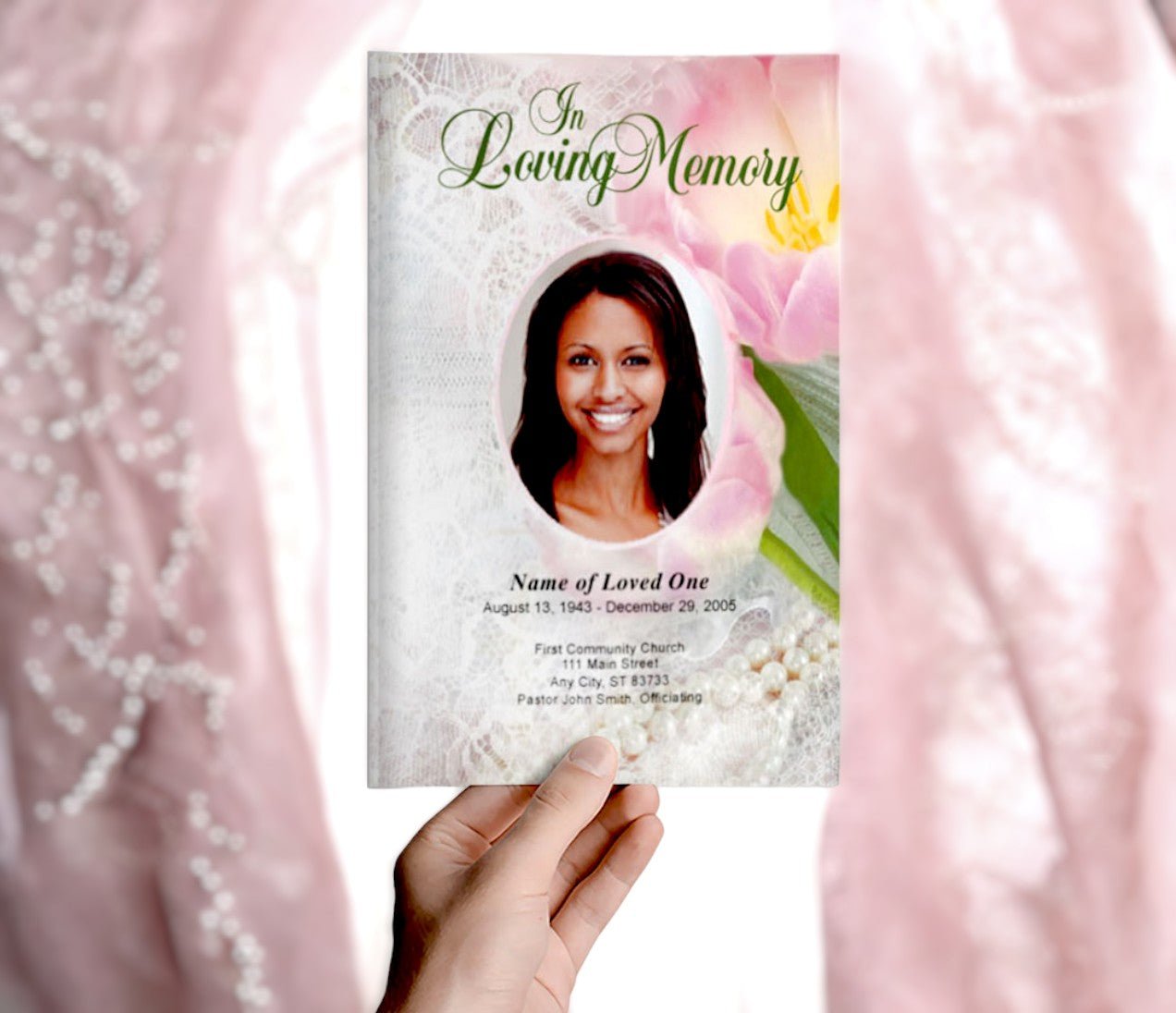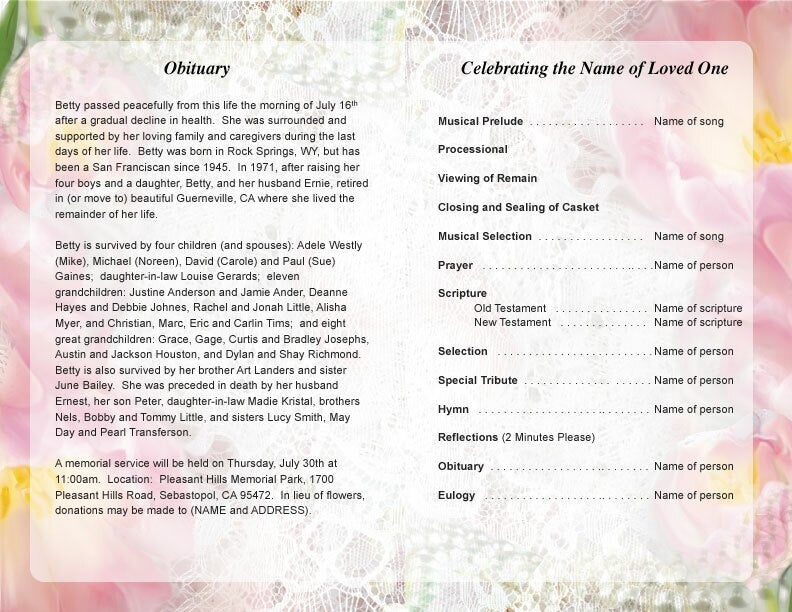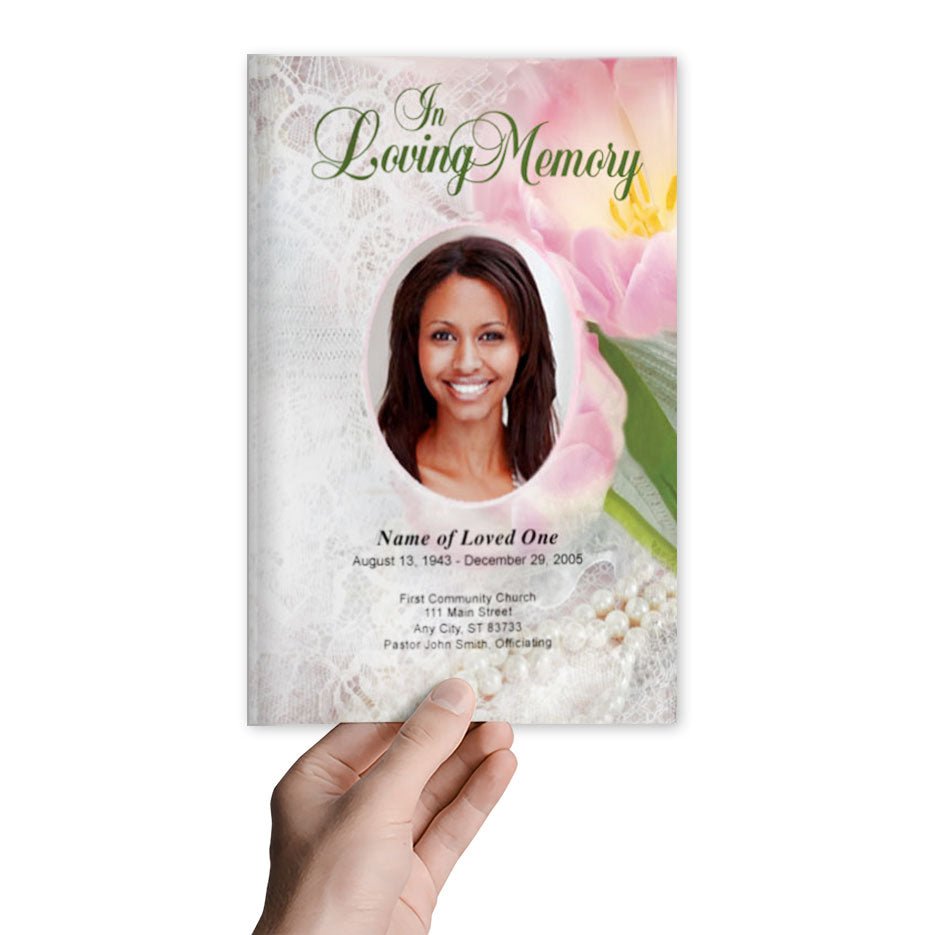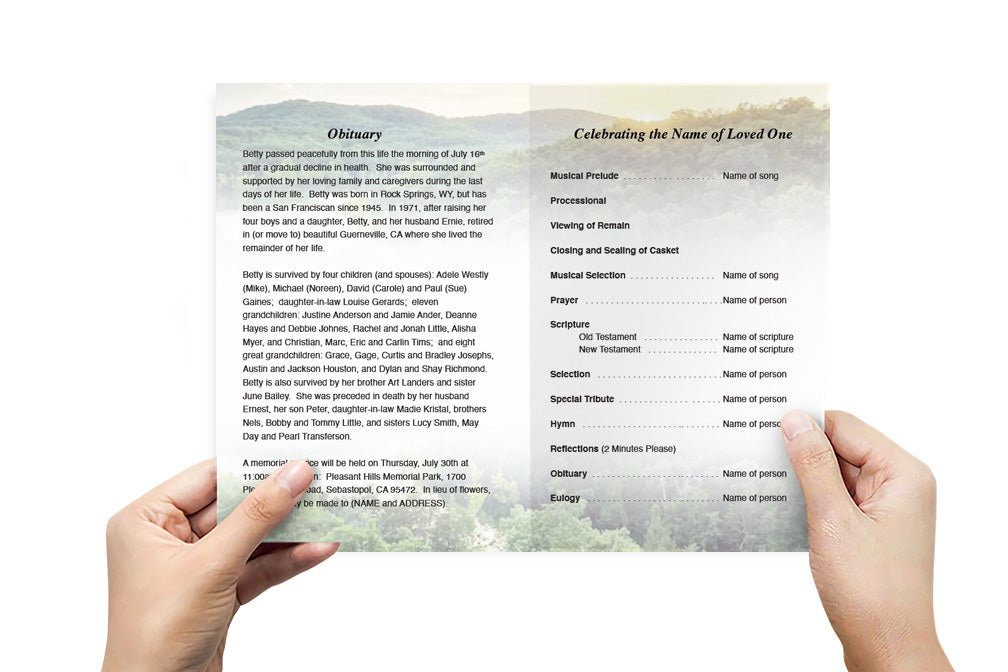How to Organize the Content in Your Funeral Booklet

A funeral booklet serves as both a guide for the service and a lasting tribute to the life of a loved one. Organizing the content in a clear and thoughtful way ensures that attendees can easily follow along while also reflecting on the deceased's life and legacy. In this guide, we’ll walk you through the key sections to include in your funeral booklet and provide tips for organizing the content effectively.
1. Cover Page
The cover page sets the tone for the funeral booklet. It should be simple, respectful, and include the essential details of the deceased. Here’s what to include:
1.1 Name and Dates
The full name of the deceased, along with their birth and passing dates, should be prominently displayed on the cover. This information is typically centered and written in a formal, easy-to-read font.
1.2 Photo
Include a high-quality photo of the deceased on the cover. This can be a recent portrait or a favorite family photo that reflects their personality. Make sure the image is clear and appropriately sized for the booklet layout.
1.3 Optional: Quote or Scripture
Many families choose to include a meaningful quote, poem, or scripture on the cover page. This can be a comforting way to introduce the booklet and provide a reflection of the deceased’s beliefs or values.
2. Obituary or Life Story
The obituary is one of the most important sections of the funeral booklet. It provides a brief summary of the deceased’s life, highlighting their achievements, family, and personal interests.
2.1 Key Information to Include
- Full name, birth and death dates
- Significant life events (education, career, marriage, etc.)
- Names of surviving family members
- Hobbies, passions, or charitable work
2.2 Writing the Obituary
When writing the obituary, focus on the most meaningful moments of the deceased’s life. Highlight their personal values, their impact on family and friends, and any special memories or stories that shaped who they were.
3. Order of Service
The order of service is an essential section of the funeral booklet, as it guides attendees through the event. This section should clearly outline the sequence of readings, prayers, hymns, and speeches.
3.1 Include Key Details
Make sure to list each part of the service in the order it will occur. Include the names of those giving readings, leading prayers, or performing music, as well as any special tributes or moments of silence.
3.2 Formatting the Order of Service
Use a clean, simple layout for the order of service to make it easy to follow. Consider using bullet points or numbering each section to ensure clarity. If there are hymns or prayers to be recited, include the full text so attendees can participate.
4. Poems, Prayers, or Scriptures
Incorporating meaningful poems, prayers, or scriptures into the booklet can offer comfort and reflection for attendees. This section often follows the order of service or is integrated within it, depending on the structure of the ceremony.
4.1 Selecting the Right Text
Choose readings that reflect the deceased’s beliefs, personality, or values. Religious families may want to include scripture verses, while others might prefer secular poems or quotes that celebrate life, love, and remembrance.
4.2 Placement in the Funeral Booklet
You can either include these readings in the appropriate place within the order of service or dedicate a separate section to them. Make sure to use large, readable fonts, and leave enough space around the text to avoid clutter.
5. Tributes and Personal Messages
A section for personal tributes allows family members, friends, and loved ones to share their thoughts, stories, and memories of the deceased. This is a deeply personal part of the booklet, providing insight into the impact the deceased had on those around them.
5.1 Collecting Messages
Ask close family members and friends to contribute short tributes or stories about the deceased. You can include their names and relationship to the deceased alongside their messages. This section helps bring the booklet to life, sharing the love and joy the person brought to others.
5.2 Formatting Personal Tributes
Each tribute should be concise and heartfelt. Include one or two paragraphs for each person, and use a consistent format throughout the booklet. Place this section near the end of the booklet as a way to close with personal reflections.
6. Photos and Captions
Adding photos throughout the booklet can make it more personal and engaging. Consider using a mix of formal portraits and candid shots that capture the essence of the deceased.
6.1 Choosing Photos
Select high-quality photos that reflect the deceased at different stages of their life. You can include childhood photos, family gatherings, and significant milestones such as weddings or graduations.
6.2 Adding Captions
Include short captions under each photo to provide context. Captions can include the names of people in the photo, the year it was taken, or a brief memory associated with the image.
7. Acknowledgments and Thank You Notes
The final section of the funeral booklet can be used to thank those who supported the family during their time of grief. This section often includes acknowledgments to the officiant, musicians, pallbearers, and any others who contributed to the service.
7.1 Writing a Thank You Note
Express your gratitude to attendees and those who offered their support, whether through donations, meals, or their presence. A simple message like, “The family of [Name] thanks you for your love and support during this difficult time,” is a thoughtful way to close the booklet.
8. Final Design and Layout Tips
Once you’ve organized the content, it’s important to ensure the booklet is visually appealing and easy to read. Here are some tips to help with the final design:
8.1 Use Consistent Fonts and Colors
Stick to one or two fonts throughout the booklet, and choose a color scheme that reflects the tone of the service. Neutral colors like black, white, and gray are traditional, but you can also incorporate a favorite color of the deceased as an accent.
8.2 Keep It Simple
Avoid overcrowding the booklet with too much text or imagery. Leave plenty of white space around the content to make it easier to read. If needed, you can add extra pages to avoid cluttering the design.
How to Organize the Content in Your Funeral Booklet Conclusion
Organizing the content in your funeral booklet in a thoughtful and structured way ensures that the service flows smoothly and honors the memory of the deceased. By including key sections like the obituary, order of service, and personal tributes, and using a clean, readable design, you can create a funeral booklet that serves as a meaningful keepsake for family and friends.
For more on this topic, visit The Funeral Program Site.
© The Funeral Program Site - Funeral Programs, Funeral Program Templates and Cancer Ribbons










